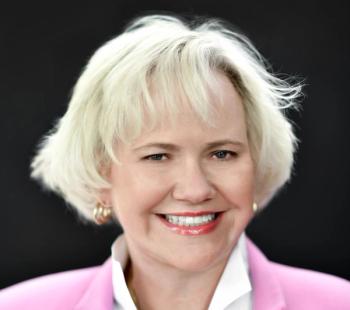
Think beyond climbing. For leaders, going sideways can be the right move.
Healthcare leaders, and those aspiring for bigger roles, can take different paths to success. Sometimes a lateral move can give leaders a chance to earn valuable skills.
The National Institutes of Health celebrated
During a program in February, the leaders recalled their careers and shared some of their insights and perspectives. J. Taylor Harden, former assistant to the director for special populations at the National Institute on Aging, offered suggestions for other aspiring leaders.
Harden suggested that leaders should think differently about advancing their careers.
“Many of us have been socialized over time to think about our careers as a ladder, progressing up and up and up,” Harden said. “What I've learned here at the NIH is that your career is more like a jungle gym.”
Harden advised NIH researchers that if they are interested in different challenges, they can look at some of the agency’s other research institutes. But her advice certainly applies to those working outside the NIH.
“You could go to the other side of the jungle gym and gain a whole new perspective. Bottom line, be flexible and never feel boxed in,” Harden said. “Your career is much more expansive than just a simple ladder. You have the entire jungle gym of science to explore.”
Other healthcare leaders have also touted the virtues of moving sideways in their organizations, and they said lateral movement can offer lasting benefits. And a circuitous route can ultimately help leaders advance into higher positions down the road.
In an interview with Chief Healthcare Executive®, Gapstur said, “I think about a lot of really great Fortune 500 companies that have leadership tracks … They'll place people across their organization in different roles, and there may be two, three, four lateral moves before they have that next move up again. And all of that is in an effort to give people a breadth of experience that they don't have. And I think healthcare is a little bit behind in terms of how we think about career pathing.”
Jenny Redman-Schell is senior vice president of ambulatory services at Aspirus Health and president of Aspirus Medical Group. In
“I've also been somebody who has been hungry for additional responsibilities or to get out of my comfort zone, and move into leading an area that I've never led before,” Redman-Schell said. “I've done that a lot in my career, done that lateral movement. It's not just a vertical … go from a supervisor to the CEO. You really move around the organization. And I feel like that definitely has made me a better leader and helped me understand various components of the organization.”
Donna Grande, former president of the American College of Preventive Medicine, suggested that those looking to grow in their careers should look at positions that could give them experience in managing budgets and learning about the finances of an organization.
“Financial acumen is so incredibly important,” Grande told Chief Healthcare Executive®. She said leaders aiming to rise in the organization should gain “the business acumen to be able to fully understand the aspects of business negotiations, as well as running a business.”
Mindy Kairey, managing partner of Korn Ferry, a consulting firm, offered suggestions for
“Somehow or another at the end of the day, try to be managing a business,” Kairey said. “Because at the end of the day, your ability to demonstrate that you can do that, particularly with the competitive and financial pressures that exist in the market today, every board wants to have confidence that you know how to manage the business.”






















































































